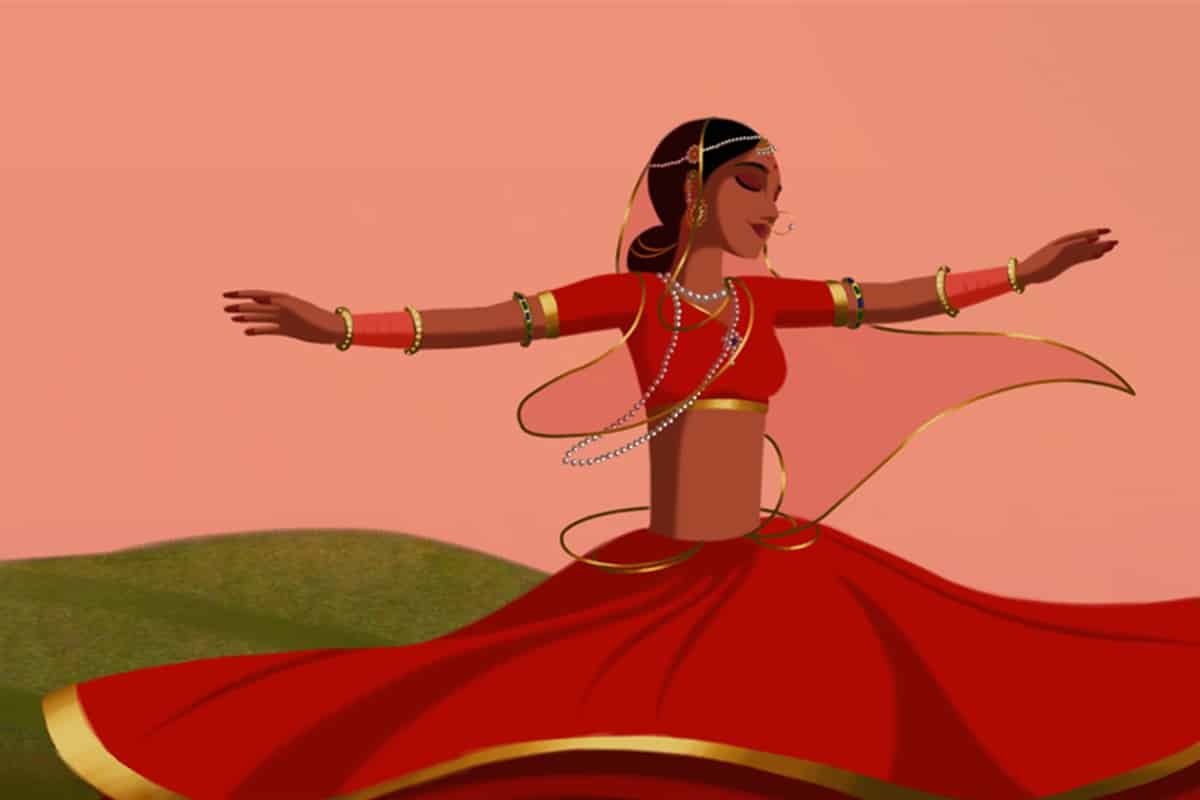Movie Review: ‘Bombay Rose’ (Netflix)

In a world where animated films are mostly computer generated imagery (CGI), ‘Bombay Rose’ (2021) which has been written, edited, designed and directed by Gitanjali Rao, offers a quintessential 2D animated film that transports a viewer back in time whilst simultaneously staying in the present moment. Each frame is hand-painted and the process took 18 months to complete using a talented team of 60 artists.
The main story revolves around two migrants – Kamala and Salim – who find one another as they try and make a living on the streets of Mumbai. Everyday Kamala hand-ties garlands made from jasmine buds and by night she’s a dancer at a bar. She lives with her grandfather and younger sister, Tara. Having sacrificed her own ambitions so that her sister can have an education, Kamala continues to dream of leaving behind the bustling city for a better life.
Salim, who fancies himself as a bit of a Bollywood hero also sells flowers on the roadside knocking on the windows of vehicles passing-by, not something he wishes to do, however, after leaving behind his life in Kashmir after becoming orphaned, it’s the only way for him to make a living. Salim clocks eyes on Kamala from across the road and falls in love. With his sweet gesture of giving her a rose, wins over Kamala’s heart, who in turn starts to believe that there is still a chance to experience true love even if it’s deemed forbidden.
Rao has cleverly depicted their love story in two realms which intertwine throughout the film. In reality, the pair are unable to express their feelings openly, though in Kamala’s fantasy she pictures herself as a princess in the era of the Mughal Empire and Salim a charming prince; and here it needs to be noted that the detailing in these scenes are enchanting, just like Mughal paintings.
Then there’s Ms D’Souza, a retired widow who lives in the shadow of her past, reminiscing on the good times that she and her late husband once had back in 1950’s. She wistfully dances and sings to their favourite songs, longing for the day they can be reunited. The use of particular songs popular of that time, such as Hoon Abhi Main Jawan, ‘Aar Par’ (1954), Aaiye Meherbaan, ‘Howrah Bridge’ (1958), to the peppy Baar Baar Dekho, ‘China Town’ (1962), brought back the nostalgia from that evergreen era. Again, Rao manages to take the audience from the present day to the yesteryear effortlessly as the city transforms into a black-and-white version of itself to reflect Ms D’Souza’s memory of what Bombay was then.
Throughout the film, the use of different sounds to help illustrate the busy streets or markets in Mumbai, complimented the richness of the visuals and captures the multifaceted city that everyone knows and loves.
The film packs a lot and covers a range of topics, highlighting the issues of poverty and the struggles of daily life; to exploitation, whether that’s child labour or women being taken advantage of and seen as a commodity. And not forgetting the taboo around interfaith relationships that is still mostly frowned upon.
There were some well-known names who lent their voices to the characters, Cyli Khare (Kamala), Amit Deondi (Salim), Gitanjali Kulkarni (flower seller), Anurag Kashyap (Raja Khan), Makrand Deshpande (Mike), Shishir Sharma (Anthony Pereria), Virendra Saxena (Kamala’s grandfather) and Amardeep Jha (Mrs D’Souza).
All-in-all a great animated film that is a visual treat and grasps the imagination. Even with minimal dialogue you can understand the story just through the expressions on the character’s faces. It would have been interesting to delve deeper into the backstory of the main characters, however this is not a deal breaker. Watching the UK version in English may not have captured the true essence of the multilingual society that Mumbai is, so if you get to watch ‘Bombay Rose’ in Hindi it might offer a different experience.








